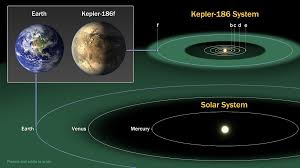NASA scientists have announced the discovery of a new Earth-sized exoplanet orbiting within the habitable zone of a distant star system, raising hopes for the potential of life beyond our solar system.
The planet, named Kepler-452c II, was detected using data from the James Webb Space Telescope and lies approximately 1,200 light-years away in the constellation Cygnus.
What makes this discovery remarkable is the planet’s rocky composition, temperate climate, and orbital similarity to Earth.
It completes one orbit around its sun-like star in 385 days, and preliminary atmospheric readings suggest the presence of water vapor and carbon dioxide—key ingredients for sustaining life.
Astrobiologists are particularly excited about the planet’s gravity, which is only 1.1 times that of Earth, making it potentially suitable for human exploration in the distant future.
While no signs of biological activity have been confirmed, the planet has been added to NASA’s shortlist for future observation missions.
This breakthrough adds to a growing list of potentially habitable worlds and underscores the power of next-generation telescopes in unraveling the mysteries of the cosmos.
As scientists continue to refine their models and gather more data, Kepler-452c II could become a focal point in the search for extraterrestrial life.

